Erodium cicutarium, Redstem Stork's Bill
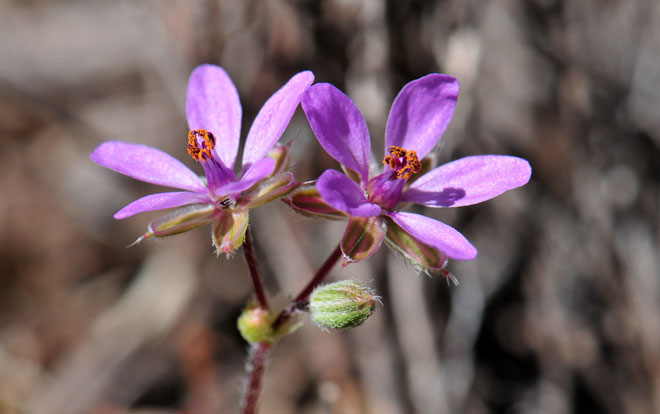
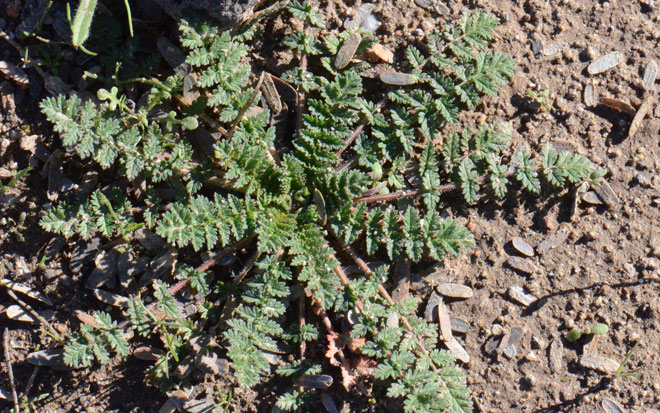
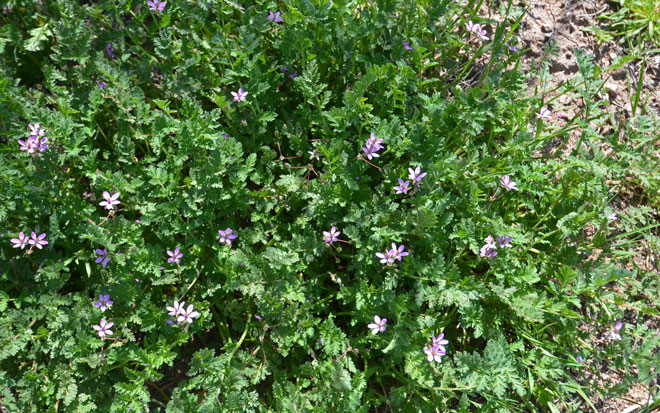
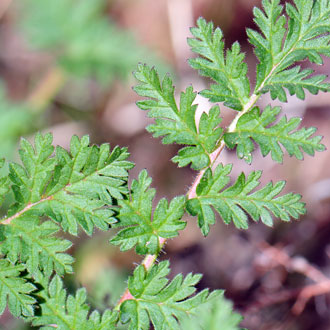
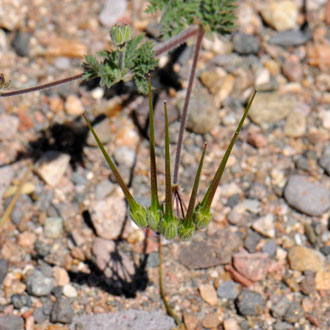
Scientific Name: Erodium cicutarium
Common Name: Redstem Stork's Bill
Also Called: California Filaree, Cutleaf Filaree, Filaree, Heron Bill, Redstem, Redstem Filaree, Red-stem Stork's-bill, Stork's Bill, Storksbill (Spanish: Alfilerillo, Alfilerilla, Agujitas, Aguja del Pastor, Peine de Bruja)
Family: Geraniaceae, Cranesbill or Storksbill Family
Synonyms: ()
Status: Introduced
Duration: Annual or biennial.
Size: Up to 20 inches (51 cm) or more with support.
Growth Form: Forb/herb; decumbent to ascending, glandular hair, small taproot may provide additional support during periods of drought.
Leaves: Green; first years growth is a basal rosette, leaves pinnately compound, leaves longer than wide, up to 8 inches (20 cm) or more long.
Flower Color: Pink to purple or red-lavender; long flowering stalk in clusters of 2 or more (8); fruit glabrous often in the shape of a heron or stork's bill.
Flowering Season: February to July.
Elevation: Up to 7,000 feet (2,134 m).
Habitat Preferences: Occupies a variety of habitats and locations; desert, riparian, plains, mesas, moist areas, disturbed areas, landscaping.
Recorded Range: Erodium cicutarium is wide-spread throughout North and South America and Eurasia. It is found throughout Arizona below 7,000 feet (2,134 m).
North America & US County Distribution Map for Erodium cicutarium.
U.S. Weed Information: Erodium cicutarium is listed in by 46 state agriculture or natural resource departments and in: Weeds of the Northeast, Weeds of the United States and Canada, Southern Weed Science Society and in Weeds of the West.
Invasive/Noxious Weed Information: Erodium cicutarium is listed as a Noxious Weed (B-List) by the state of Colorado.
Wetland Indicator: Unknown
Threatened/Endangered Information: Unknown
Genus Information: 13 species in Erodium in throughout North America. 2 native and 1 non-native species in Arizona.
3 sub-species in Erodium cicutarium:
Erodium cicutarium subsp. bipinnatum, Redstem Stork's Bill; (KY?)
Erodium cicutarium subsp. cicutarium Redstem Stork's Bill (CA, NV, OR, WA);
Erodium cicutarium subsp. jacquinianum, Redstem Stork's Bill (Recorded Range above.)
The Plant List includes 420 scientific plant names of species rank for the genus Erodium. Of these 128 are accepted species names.
Comments: Erodium cicutarium is a European species that has become extensively naturalized throughout North America. This is one of the first species to invade North America, apparently introduced into the Southwest in the early 1770's by the Spaniards.
Also see in Southwest Desert Flora; the less common native geranium Texas Stork's Bill, Erodium texanum.
Redstem Stork's Bill has several medical uses by southwest Native Americans. See all ethno-botanical uses at Native American Ethnobotany, University of Michigan, Dearborn.

